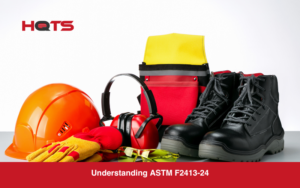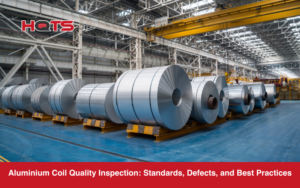The European Union’s REACH (Registration, Evaluation, Authorisation, and Restriction of Chemicals) regulation is in place to ensure chemicals are well-managed throughout the EU. At its core is the SVHC (Substances of Very High Concern) list. This list identifies chemicals that are harmful to health and the environment.
Whether you’re a manufacturer or importer, it’s important to follow SVHC rules and stay compliant. In this article, we’ll explain what SVHCs are, highlight the most common substances on the EU REACH SVHC list, and provide tips on how you can test for these chemicals to keep your products compliant.
What is the Meaning of SVHC?
SVHC refers to chemicals that the European Chemicals Agency (ECHA) has flagged due to their potential dangers to human health and the environment. A chemical is designated as an SVHC if it meets specific criteria. These includes being known to cause cancer, affect genetic material, or harm reproductive health.
Beyond these health risks, SVHCs also include substances that persist in the environment, meaning they don’t easily break down and can accumulate over time. Under this category, there are both highly persistent and bioaccumulative ones, meaning they build up in living organisms.
The REACH SVHC list includes:
- Chemicals classified as carcinogenic, mutagenic, or toxic to reproduction (CMR) in categories 1 or 2;
- Substances that are persistent, bioaccumulative, and toxic (PBT);
- Very persistent and very bioaccumulative (vPvB) substances;
- Chemicals with similar concerns, such as potential endocrine disruptors.

Is SVHC the Same as REACH?
SVHCs, or Substances of Very High Concern, are a key part of the REACH regulation. While REACH covers the overall framework for chemical safety in the EU, SVHCs are singled out for their significant risks to health and the environment. These include substances that are known to be cancer-causing, reproductive toxins, or persistent in the environment.
In short, while REACH sets the general rules, SVHCs require extra attention and regulation due to their higher risks.
Top 5 Substances Found on the REACH SVHC List
The SVHC is continuously updated and as of 27th June 2024, the Candidate List of now contains 241 substances. Below are the top five substances commonly found on the REACH SVHC list.
| Name | Number of SiA Notifications | Common Product Categories |
|---|---|---|
| Bis (2-ethylhexyl)phthalate (DEHP) | 129 | Plastics, Flexible PVC, Toys, Medical Devices, Flooring |
| Lead | 111 | Batteries, Electronics, Paints, Plumbing Pipes, Ceramics |
| Hexabromocyclododecane (HBCDD) and all major diastereoisomers identified: Alpha-hexabromocyclododecane, Beta-hexabromocyclododecane, Gamma-hexabromocyclododecane | 37 | Flame Retardants in Textiles, Foams, Building Materials |
| Aluminosilicate Refractory Ceramic Fibres (Index Number 650-017-00-8) | 27 | High-Temperature Insulationin Industrial Furnaces, Ovens, Refractory Materials |
| Dibutyl phthalate (DBP) | 21 | Plastics, Adhesives, Coatings, Flexible PVC, Rubber Products |
Source: Candidate List of substances of very high concern for Authorisation – ECHA (europa.eu)
Testing and Verifying SVHC REACH
Even though REACH regulations don’t specifically require a test report for SVHCs, you as an importer have a responsibility to make sure your products comply with the rules. To do this, you need to gather enough information about whether and how much SVHCs are present in their products.
In practical terms, this usually means conducting tests or getting test reports from your suppliers. These tests are crucial for confirming if SVHCs are in the product and, if so, in what amounts. By verifying this information, you as an importer can ensure your products meet REACH standards and steer clear of any regulatory problems.
How to Test for Substances on the EU REACH SVHC List
Below is a step-by-step guide to help you along the way.
1. Read the SVHC List and Identify Potential SVHCs in Your Products
The SVHC list is regularly updated with new substances, so it’s important to stay informed about any regulatory changes. Read the ECHA SVHC list, and consider signing up for their newsletter here to receive updates directly in your inbox.
Start by examining the chemical composition of your products. For example, you can for example ask your suppliers for detailed information and request Safety Data Sheets (SDS) or Certificates of Analysis (CoA) to determine if any materials used in your products contain SVHCs. Alternatively, you can forward these documentation to our product compliance team for assistance in assessing whether your product may be at risk of containing SVHCs.
3. Choose and Conduct Testing
After identifying potential SVHCs, it’s time to schedule a test at an accredited testing laboratory, such as HQTS laboratories. Our lab team will first identifying which SVHCs need to be tested for, based on the specific substances listed and the product’s composition, the required sensitivity and detection limits for each SVHC and choose methods that can reliably detect substances at concentrations relevant to regulatory thresholds and product safety standards.
4. Analyze Results and Ensure REACH SVHC Compliance
After completing the tests, we’ll issue a detailed report. This report will include the detection limits for each SVHC, helping to determine if any SVHCs are present and if their concentrations exceed the 0.1% by weight threshold.

Please note, If any SVHCs are detected above the threshold, it’s important to inform your customers and ECHA and as required by Article 33(1) of the REACH Regulation.
5. Maintain and Adapt REACH SVHC Compliance Practices
Conclusion: Staying Ahead of REACH SVHC Regulations
Staying on top of the EU REACH SVHC list is crucial for keeping your products compliant. SVHCs are chemicals with serious health and environmental risks, and the list gets updated regularly. To ensure compliance, keep track of these updates and make sure your products are tested for SVHCs, making sure they don’t exceed the 0.1% by weight limit.
If this process feels overwhelming, don’t worry—we’re here to assist. Contact our team for expert help with navigating SVHC compliance or to test your products in our accredited testing laboratories.





